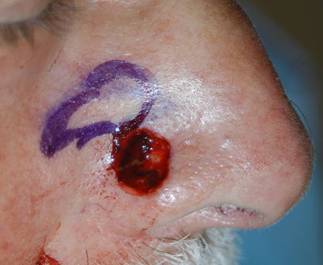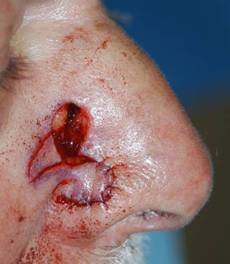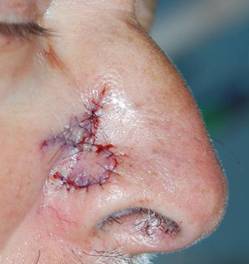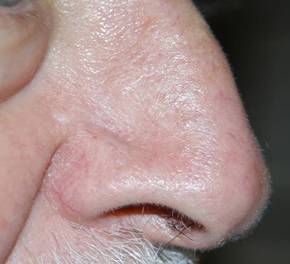Thursday, March 23, 2006
9725
The Joint Flap for Nasal Tip and Alar Reconstruction -- A new solution for an old problem
A cosmetically-acceptable reconstruction of the nose after tissue loss can be challenging. Drawbacks to previous reconstructive flap designs include flattening of the nasolabial fold, loss of definition of the alar groove and an inherent requirement for staged operations. The use of rotation and advancement flaps for resurfacing small surgical defects of the nasal tip and ala deserves reappraisal. The rich arborizing blood supply of the face allows for the design of flaps based both on dermal/subdermal plexuses as well as on musculocutaneous perforators.
Our proposed design combines Banner and nasolabial flaps. The first action is a 90-degree rotation of a donor flap to fill a defect, followed by a V-Y advancement of a second juxtaposed flap to fill the resultant defect of the first rotation flap.
There was no flap loss. 3/40 patients experienced a minor wound infection. 5/40 flaps required subsequent procedures to improve appearance.
A single surgeon's experience is presented including 40 patients treated between 2000 and 2005. All have nasal defects (average 1.2cm) after excision of carcinomas. This flap combination serves to resurface defects on the nasal tip/ala without flattening the nasolabial fold or erasing the alar groove. The design is simple and results are consistently superior.




See more of Reconstruction/Burn
Back to 2006src Complete Scientific Program
